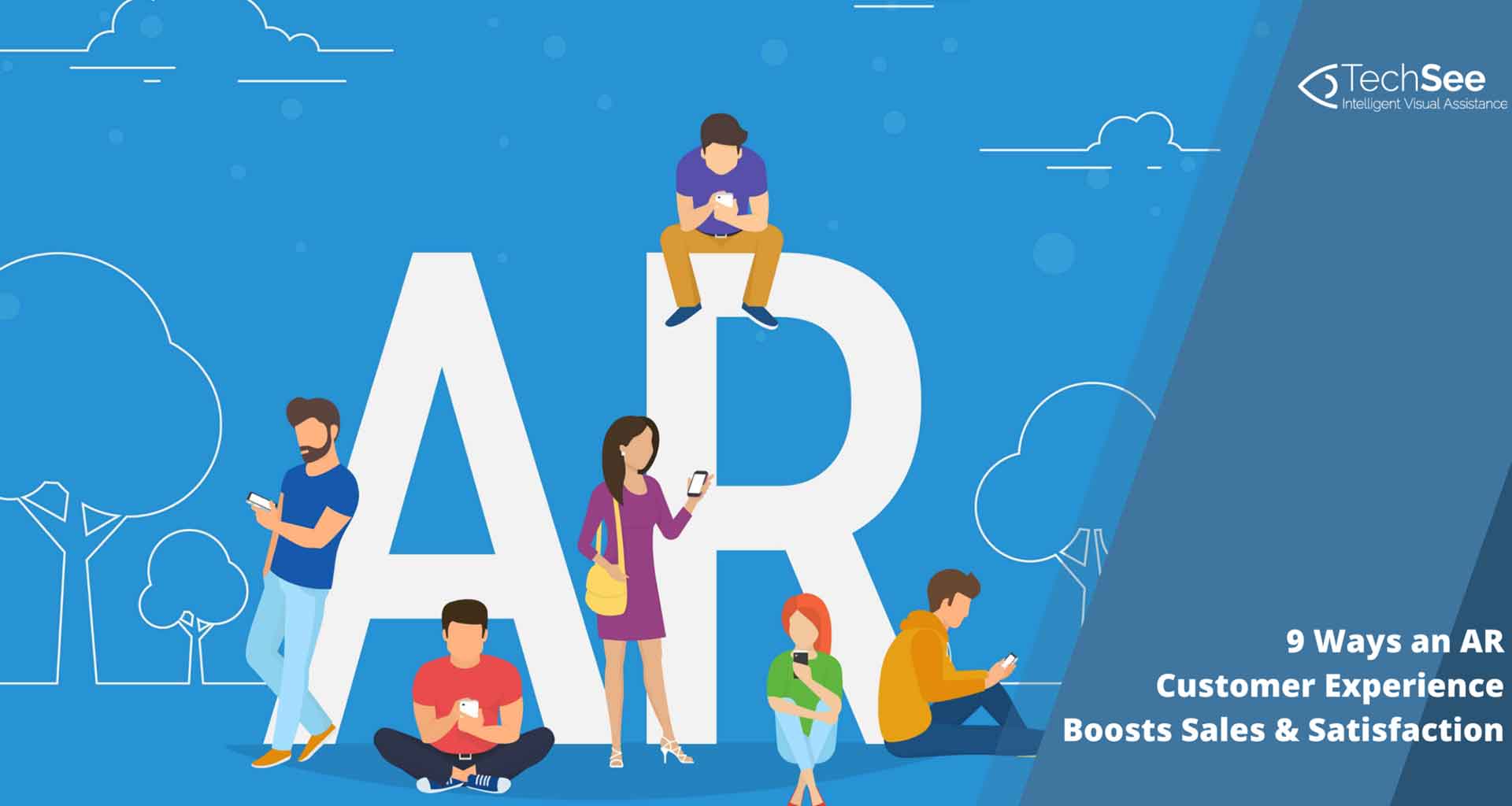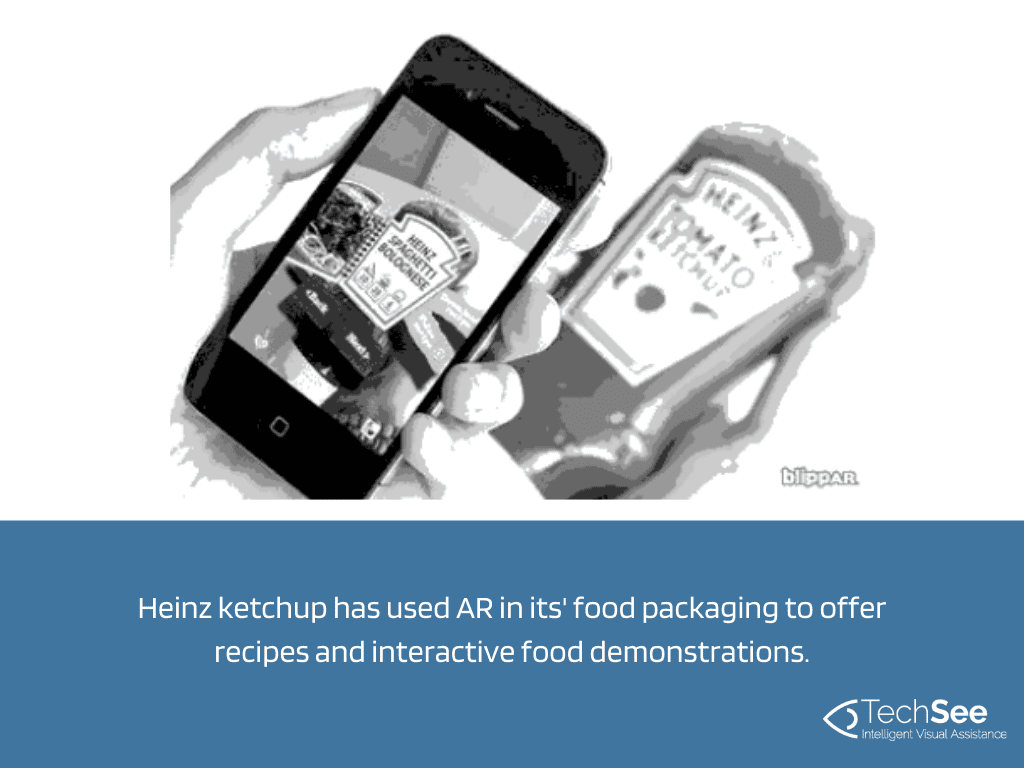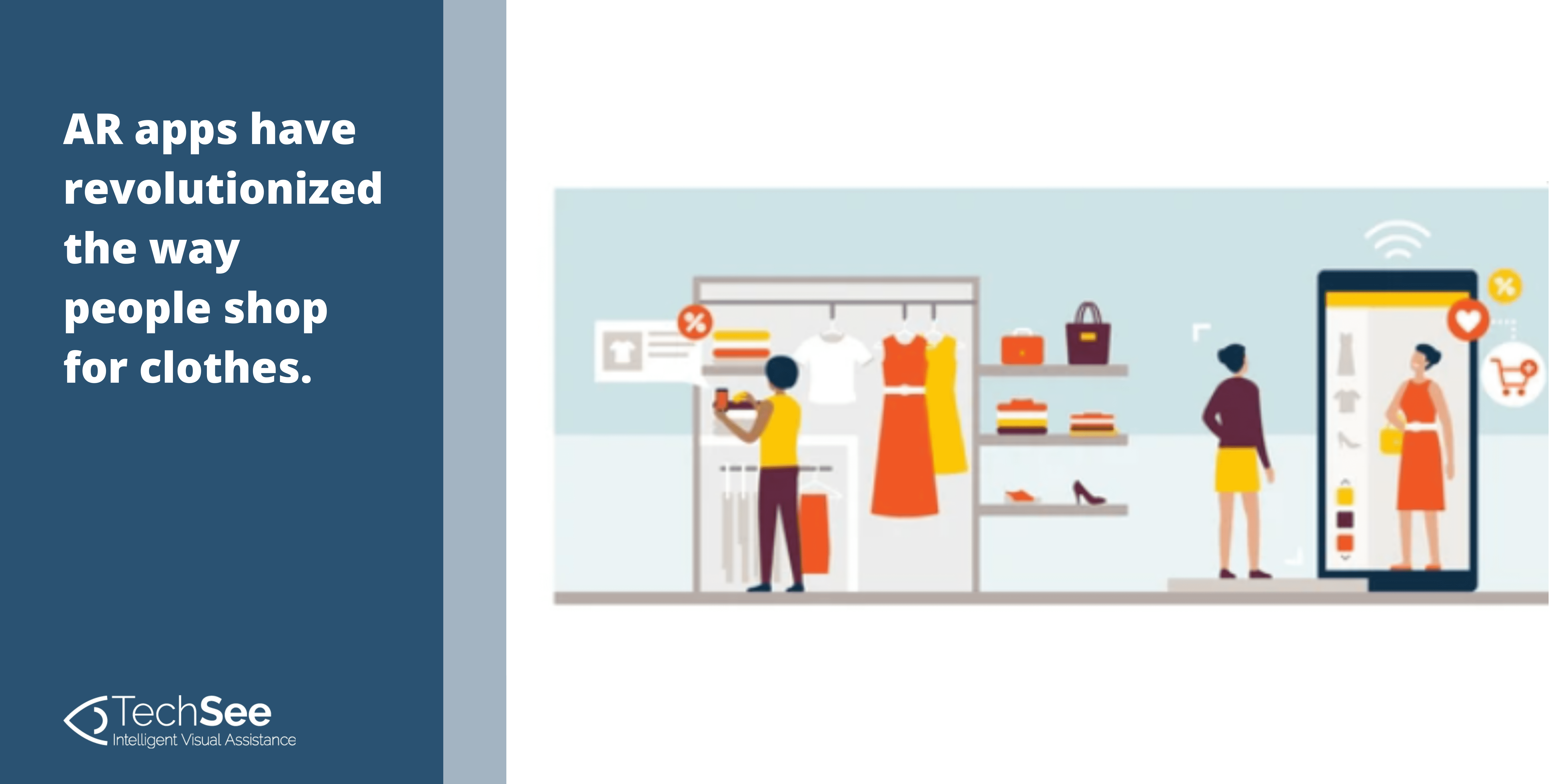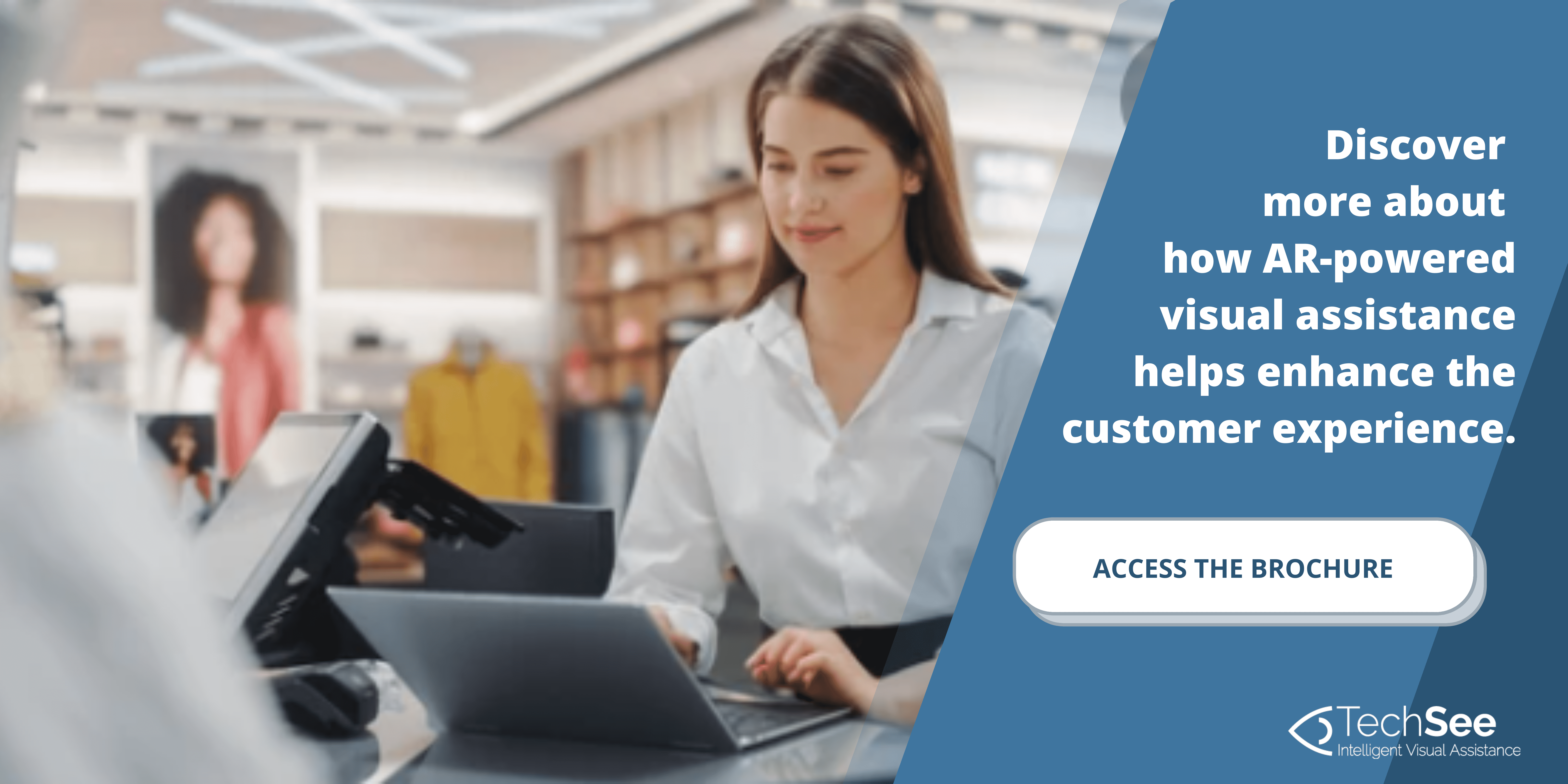Contents
Augmented reality (AR) – the ability to overlay and share physical objects, spaces and images on a user’s view of the real world – is revolutionizing the customer experience and transforming the way marketers and businesses interact with their clients. New AR customer experience techniques enable companies to successfully engage with consumers at every step of the customer journey.
For example, through new mobile technology, AR has emerged as an innovative tool that allows brands an almost unlimited opportunity to interact three-dimensionally with consumers on their mobile devices. Augmented reality customer experience is a new digital experience that transforms the customer journey into an immersive visual interactive experience. The best AR apps enrich the relationship between consumer and brand, and serve as a powerful new mechanism for companies to add value at every stage of the customer journey: pre-sales, sales and post-sales.
Pre-Sale: Using AR to Add Value to the Shopping Experience
The pre-sale phase refers to any activities that occur before a customer is acquired. This generally includes initiating contact with a prospect, identifying the prospect’s needs, formulating an offer, overcoming any objections and closing the sale. Sometimes, the pre-sale phase can extend into the period of time before the product or service is delivered to the customer. Effectively engaging the customer during this phase is key in hastening the sales process and driving a better customer journey.
Remove uncertainty from decision-making
Determining whether a particular piece of furniture or a new home appliance would fit well within your personal space used to require a healthy imagination. This may explain why furniture has been slow to transition online; often a personal visit to the showroom was required to complete the mental image of your home with that new sofa.
AR helps shoppers transform their homes into virtual showrooms. Wayfair View in Room 3D and Ikea Place are examples of two augmented reality customer experience apps that allow customers to visualize furniture in their own home ahead of purchase using their smartphone.
- Which color armchair will match the carpet best?
- Will the sofa overwhelm the space?
- Will the refrigerator fit within the kitchen niche?
These interactive apps remove the uncertainty as it projects the furniture or décor in 3D at full-scale, clearly showing the customer whether the item is suitable for their particular room or space, complete with accurate measuring capabilities.
See what’s trending before making the big decision
Peer pressure is a strong driver for sales. Brazilian retailer C&A displays its apparel on innovative clothing hangers that show how many Likes each item has collected from the social-media community. As shoppers pass through the store, they can aim their smartphone app at the item, which brings up the “look” online. They can see which of their friends Liked it, Like it themselves, and watch the number of Likes on that item’s counter change before their eyes. The layered data on top of the store’s physical reality enables the shopper to buy with confidence.
Interactive packaging technology
Brands can incorporate a variety of augmented reality experiences into their packaging, and offer the consumer an interactive visual experience. These experiences range from practical applications such as Heinz packaging offering recipes and interactive food demonstrations using its products as an ingredient, to pharmaceutical companies allowing consumers to scan their packaging and get more information on the drug and possible interactions.
Brands can also incorporate entertaining activities to engage the customer. Nesquik and Wheaties offer interactive games that can be played at the breakfast table when the smartphone is pointed at the packaging. Other brands offering similar types of AR interactive food packaging include Heineken, McDonalds, and Wise potato chips.
Point of Purchase: Using AR to Boost Sales
The point of purchase refers to exact time and location that a customer executes the payment for goods or services. If it is an in-store purchase, POS technology or a cash transaction will be used to execute the sale, while an online purchase will be processed via a virtual point of sale, such as a website or mobile app. Ensuring the customer is fully engaged during the point of purchase is critical in order to avoid abandoned shopping carts, both physical and virtual. Enhancing sales through visual engagement has been proven to work, delivering more consumer conversions, and ultimately garnering a greater level of success for your business.
Try before you buy with augmented reality customer experience apps
Beauty apps are taking the guesswork out of choosing a new look through innovative uses of augmented reality customer experience.
L’Oreal’s Style My Hair AR app allows users to get a 3D virtual makeover, trying out different hairstyles or hair colors right on their phones, before submitting to the stylist’s scissors or hair dye.
Sephora Virtual Artist AR app allows consumers to virtually “try on” anything from lipstick to eyelashes and facial cosmetics. The app utilizes a smartphone’s camera to precisely map the shape of the customer’s facial features, and overlays the beauty products on their face so they can see what colors and brands look best before they buy.
Customers can swipe through over 3,000 lip colors by brand, format or shade family, and instantly see how each one looks on their own lips. The app also serves as a new way to teach beauty application with step-by-step AR virtual tutorial.
Augmented Reality Virtual Dressing Rooms
AR apps make shopping for apparel easier. TryLive Apparel and Dressing Room by Gap allow customers to select a garment from the virtual shelf, and then choose their clothing size and body shape. An AR-generated model tries on the clothing and can be rotated 360⁰, allowing the shopper to get a better idea of how the clothes will fit. Memory Mirrors in Neiman Marcus record and show outfits from all angles, enabling shoppers to compare clothing options side by side, and even share the images with friends.
Immersive Retail Experience
Starbucks flagship Roastery in Shanghai has harnessed the power of AR to transform the retail experience. Visitors to the store use their smartphone to unlock fun visuals, gather information about products, and even learn about the roasting process. This technology is powered by Alibaba, the Chinese tech giant and owner of early AR adopter Yihaodian, famed for launching 1,000 virtual 3D grocery stores in key locations across China. Yihaodian shoppers could only see, enter and shop in these virtual supermarkets by using the Yihaodian Virtual Store App while being located physically near one of their locations.
Post-Sale: Using AR to Solidify the Customer Relationship
Post-sale support refers to any activities that occur after products or services have been sold. This may include warranties, upgrades or repairs, installation, troubleshooting or other customer inquiries. Engaging well with customer is important during post-sale support to solidify the relationship, drive customer loyalty and ensure customer satisfaction.
AR self-service support
Brands are upping their post-sales service game by enabling customers to tap into powerful AR-based self-service. Using a smartphone, customers can access the product’s knowledge base with FAQs, manuals and training material displayed in an AR overlay. For example, Nespresso allows users to scan their packaging and get step-by step coffee machine descaling instructions. In addition, AR-based self-service support has proven itself in a wide range of smart home applications.
AR technical support
The back-and-forth so common in agent-customer interactions during technical support calls can be eliminated with AR-based visual support. Visual Support allows customers to hold a smartphone up to the product and all parts will be identified in real time by computer vision technology. Agents immediately know the exact name and model number of the malfunctioning device, resulting in faster issue resolution times.
AR user manuals
Are bulky paper-based user manuals a relic of the past? Hyundai has developed an AR-based digital owner’s manual that shows drivers how to maintain and fix their vehicle. By holding up their smartphone, the AR user guide explains what the buttons and switches do, and walks the car owner through the process of checking oil levels, filling up windshield fluid, and even replacing air filters. Similar AR-based user manuals featuring a Virtual Technician provide instructions for operating appliances or installing consumer electronic devices.
AR Customer Experience To Boost Sales And Satisfaction
Customer relationships are changing dramatically as CX is becoming a differentiator. Brands have recognized the game-changing abilities of introducing AR into their pre-sales, point of sale and post-sale support operations. Via a smartphone, AR enhances practical elements of personalized marketing, sales and technical support, by extending content and interaction abilities, and providing value that goes way beyond simple novelty. These examples are just a small sampling of augmented reality use cases and the potential AR can deliver across the customer relationship value chain and throughout the entire customer journey.











